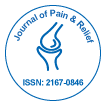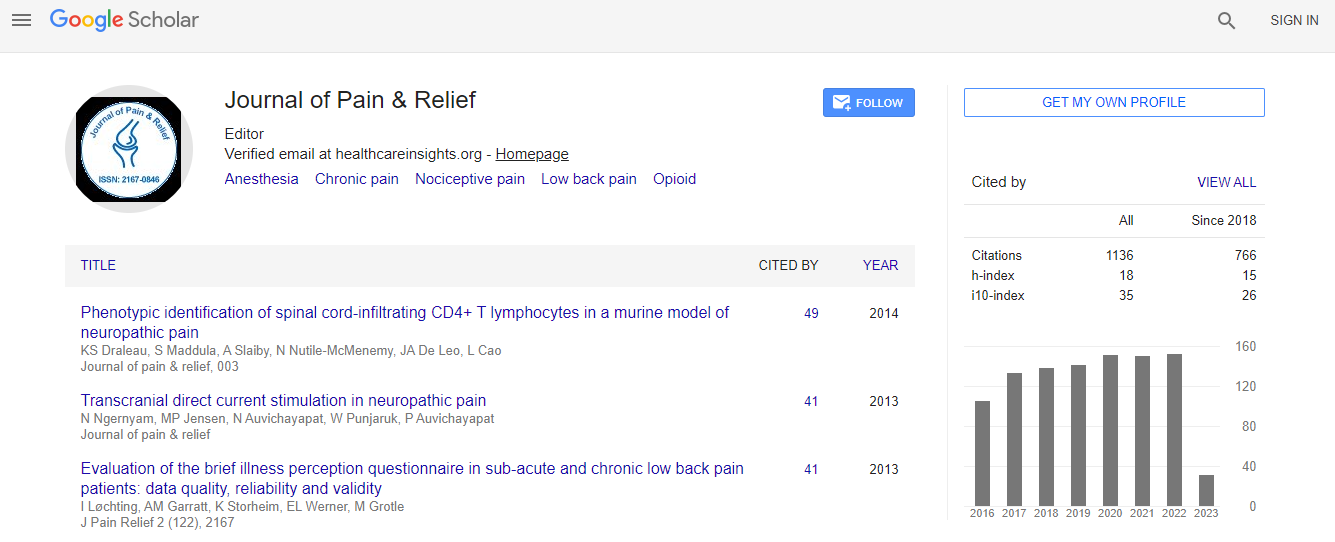Case Report
Non-Operative Management of a Cervical Zygoapophyseal Joint Cyst: Case Report
| Christopher Thomas Plastaras, Todd Philip Beery* and Akhil Madhukar Chhatre | |
| Department of Physical Medicine and Rehabilitation, The University of Pennsylvania, Penn Spine Center Penn Medicine Rittenhouse, Philadelphia, USA | |
| Corresponding Author : | Todd Philip Beery, DO Department of Physical Medicine and Rehabilitation The University of Pennsylvania, Penn Spine Center Penn Medicine Rittenhouse, 1800 Lombard Street 1st Floor Philadelphia, PA 19146, USA Tel: 517-414-9009 E-mail: tbeery22@hotmail.com |
| Received March 18, 2013; Accepted May 06, 2013; Published May 08, 2013 | |
| Citation: Plastaras CT, Beery TP, Chhatre AM (2013) Non-Operative Management of a Cervical Zygoapophyseal Joint Cyst: Case Report. J Pain Relief 2:116. doi: 10.4172/2167-0846.1000116 | |
| Copyright: © 2013 Plastaras CT, et al. This is an open-access article distributed under the terms of the Creative Commons Attribution License, which permits unrestricted use, distribution, and reproduction in any medium, provided the original author and source are credited. | |
Abstract
This report describes a case of an intraspinal extradural cyst arising from the C7-T1 zygapophyseal joint, resulting in spinal cord compression with the presentation of minimal pain and no pathologic neurologic findings. A 71-yearold male presents with a 4-month history moderate neck pain, radiating to the left shoulder. Physical examination revealed no motor or sensory deficits. Muscle stretch reflexes were intact in bilateral upper and lower extremities, and there was no imbalance with ambulation. Cervical MRI revealed a large cystic structure arising from the left C7-T1 zygapophyseal joint a causing compression of the spinal cord. He was managed conservatively with physical therapy given his level of pain and lack of neurological deficits and demonstrated improvement in his symptoms. Despite their rare occurrence, cervical intraspinal cysts causing cord compression can be considered a source of mild neck pain and can be managed conservatively in the absence of neurological symptoms.

